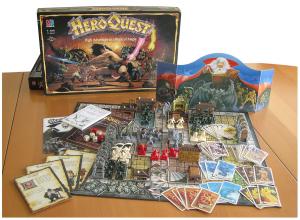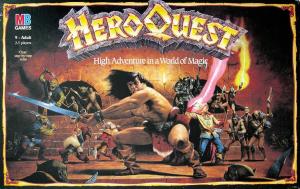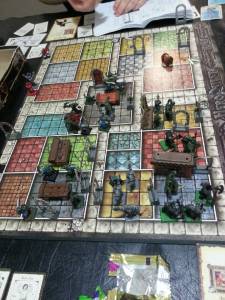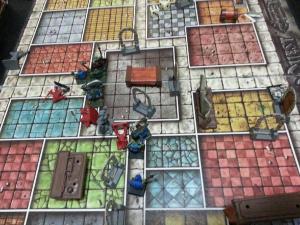Author’s Note: This was originally written for another outlet, but for a variety of reasons didn’t appear there. Since Oscar has reinvigorated the discourse, I present, for posterity, my thoughts on “JOKER”.
The city is a hunting ground for predators, obscured by steam rising from a river of human filth, where a man who has been wounded in his soul can find no release for urges he does not fully understand. He only knows that he is a creature of the city, a city at once intimate and hateful, and that it drives him away, even as he cannot escape it.
Such is the world of the “lonely man” films of the late 1970s and early 1980s. A discrete sub-genre focused on urban isolation, they were a hallmark of the era, prompted by the national trauma of Vietnam and, in particular, the economic and social collapse of New York City – where the crime rate hit record numbers, power went out entirely in 1977, and the President denied a bankruptcy bailout.
It is this world which “JOKER”, the new film by Todd Philips, seeks to imitate and inhabit. Its antecedents are not just echoed in its vision of 1981’s Gotham City (a clear replica of that crumbling New York), but in the numerous homages to specific films of the period, most prominently Martin Scorsese’s “Taxi Driver” and “The King of Comedy”. But for all the surface references and similar story hooks that “JOKER” uses to make its referents known, it fails to capture the innate heart of those films: that cruelty is emergent, not directed, and that we should hold some sympathy for the human beings who both suffer and inflict.
“Taxi Driver”’s Travis Bickle hopes to gain notoriety by assassinating a senator, after he fails to make a human connection with Betsy, a campaign worker for that very politician. He composes fractured letters home to his parents, painting pictures of an important government job and a steady relationship. When he encounters Iris, a child prostitute, his intervention on her behalf suggests she should be back, leading an archetypal teenage life in the suburbs. In the film’s explosive climax, he forcibly rescues Iris from her violent pimp, Sport, and pantomimes his own suicide. The film’s epilogue – possibly real, possibly imagined – sees Iris at home, her grateful parents responding to her rescuer, and Travis reconnecting with Betsy as someone she can tacitly admire. Though final frames of undirected tension indicate that Bickle has not escaped his paranoid impulses (if he is not simply dreaming the moment whilst bleeding out), he certainly recognises a more coherent vision of society he does not know how to enter.
“The King of Comedy”, by contrast, concludes with the solitary triumph of its protagonist. Personal connections may have failed, but assault, kidnapping and extortion have done their work. The public – at a distance, through the medium of celebrity – have embraced Rupert Pupkin now that he has forced his way onto their screens. His rewards follow: a book deal, public appearances, fame and fortune. That sequence may also be in his head, but the mood is not tragic. Unlike “Taxi Driver”, the tone is at once sarcastic and condemnatory. It is plausible – terrifyingly plausible – that the public would embrace Pupkin once he has entertained them, despite the human wreckage he ascends from and leaves in his wake. His victim, Jerry Langford, is assaulted and brutalized, but “The King of Comedy” regularly reinforces that the public can see Langford only as a commodity for their entertainment. They don’t see the real person there – any more than they do for Pupkin. They only see what they want, and for this, the film finds them wanting. The spotlight isolates, the camera just another artefact of distance for the human being.
The internet has created a meme around the Joker declaiming that “we live in a society”, but “JOKER”, in fact, declares precisely the opposite. It has no use for, or belief in, the benefits of other people, and consequently sits at odds with the very proposition regarding the dangers of isolation that “The King of Comedy” and “Taxi Driver” both share. “JOKER” posits that there is no worth in integrating with society. If the “lonely men” films show people pressed up against the glass, looking longingly at a world they cannot know, “JOKER” suggests the better course is to simply smash the window.
The willingness to act against society without regret sets “JOKER” apart from the “lonely man” films, in which the struggle to integrate is key. It is that very struggle that permits the sub-genre to serve as a brilliant reference by which to humanise superhero fiction. The act of donning a mask and a false identity is inherently isolating. To use that position of loneliness to try and inhabit the society you live in is the same struggle (as it must be) for Bickle, Pupkin and all their celluloid cousins. For this reason, an older, and more coherent, association has been drawn between them and Batman, not the Joker.
1987’s “Batman: Year One” reimagined Batman’s origins as pathological, painting Bruce Wayne as a criminal driven to brutalise criminals, obsessed with his own impending death. A pre-costumed Bruce Wayne, determined to clean up the city, walks out amongst its red-light district and seeks to prise a child prostitute away from her violent pimp, Sport. “That crazy vet bit – man, that’s old” hisses Sport, hanging a lampshade on the non to a film from eleven years prior. The narrative connects Batman to Bickle, driven by the same obsessions, similarly isolated and on the cusp of self destruction. If 1986’s “The Dark Knight Returns” postulated an apocalyptic vision of what Batman could become, “Year One” suggested that this is what he always was; that in between the panels of every four-color right hook over the theft of a giant penny, the grim obsessive was there, hidden but able to be unearthed by the demanding reader.
What separates Batman’s heroics from Bickle’s futile struggles, however, is his ability to connect. “Year One”’s lift from “Taxi Driver” ends with the pre-costumed Bruce Wayne stabbed during the struggle, clutching his wound, stumbling home to Wayne Manor to die. In the depths of his despair, Bruce Wayne has a choice: call Alfred to patch him up, or slip quietly into the night. At that moment, in one of the iconic images of Batman’s history (depicted first in Batman #1 but reinvented here in a predestined hail of smashed glass), a bat flies through the window, and Bruce Wayne, inspired to live, summons Alfred to keep him alive. In that moment, Batman is born.
Most interpretations focus on the bat and the promised transformation, but it’s not the only key to the scene. In “The Return of Bruce Wayne”, written some 23 years later, the moment replays centred on the butler instead. Bruce Wayne needs help to survive. Batman isn’t Batman until he asks someone else to help him.
This is not an isolated incident. Forget brooding alone on rooftops, the bulk of Batman’s stories are about a man who overcomes loneliness. Even ignoring his wider participation in the DC universe’s more fanciful continuity, Batman has been alone only rarely. Batman has acquired no less than six Robins, three Batgirls, and two Batwomen. Alfred, Harold the Mechanic, Ace the Bathound, the list goes on. “Year One” pairs Bruce Wayne’s inner monologue with a young James Gordon’s, and ends with Gordon waiting for his friend on a rooftop. Christopher Nolan’s Bruce Wayne begins his crusade by whispering “now we are two”.
Though Scorsese is rarely approached as a moralistic film-maker, his innately Catholic background encompasses a vision where no person is without sin, and consequently, every person is on a personal battleground between annihilation and redemption. There is the sense of something lost in both Bickle and Pupkin, a sense of the better men that you might be able to reconstruct from the fragments. Both films, though ultimately ending in at once similar and yet remarkably different modes, recognise the need for human beings to find connections to better themselves. A sense that, torn apart from others, we fall prey to our worst influences, and thus, implicitly, that a community has an ability to draw us back from slipping too far into darkness. The core of the Batman narrative suggests that even for the most damaged of us, there might be a way out. If it is more graced than Scorsese’s “lonely men”, it inhabits the same moral universe.
“JOKER”, on the other hand, is almost solipsistic in its makeup. It attempts – by granting vulnerability – to graft humanity onto comic books’ most famous serial-killer. Unfortunately, in painting the struggles of Arthur Fleck, its solitary hero, it fails to give him a world of other people to inhabit. K. Austin Collins, also looking at the links between “Taxi Driver” and “JOKER” for “Vanity Fair” wrote that much of the issue with “JOKER” was “….how rotely, how condescendingly, the movie animates the tortured soul at its center…Joker presents us a world in which Fleck is constantly trod upon, and the movie is so singularly intent on proving this point that most every other part of his life, everything that isn’t a chance to reiterate Arthur’s trauma and psychosis, slyly evaporates from view.”
The constant repetition of Fleck’s circumstances centers a shorthand of his pain over, say, the black single mother who lives down the hall, with whom Fleck can idealize a relationship, but who the film makes no effort to understand. It doesn’t interrogate its premises. Where Bickle and Batman alike are tortured on the precipice of transformation, Fleck’s psychology can withstand no real tension. It’s too fragile for that.
If Fleck’s own psychology is so thinly drawn, why marry it to the already famously amorphous Joker? If all we know of Fleck is that the film wishes us to feel sad for him, and him alone, why are we expected to associate that empathy for an unrepentant mass murder?
Of the Joker’s variety of origins – from demon haunting Gotham to largely sane mobster with an affectation – only one posits him as a failed comedian, 1988’s “The Killing Joke”. Though like “JOKER”, this story presents the Joker at his most horrific, it is notably distinct in that it portrays the Joker as formerly connected to family, initially unwilling to do harm, then seeking to demonstrate that others are just like him. Like Pupkin or Bickle, that version of the Joker is trying, in a warped way, to connect to others, Batman included. Fleck doesn’t seek to be understood, because there is nothing to understand. He seeks, instead, only to be known.
Through Dick Sprang’s giant typewriter stealing Crown Prince of Crime, Cesar Romero’s moustachioed chuckler, Neal Adams’ long-faced vaudevillian triggerman and Jack Nicholson’s ‘homicidal artist’, the Joker’s behaviours are so diverse that we can only make limited universal statements about what he wants. The common element from all is that they thrive on being seen. A crime that doesn’t garner attention simply isn’t worth it.
It is this need for attention, not connection, that “JOKER” shapes – intentionally or not – as a worthy quest. Unlike Pupkin forcing his way onto television, or Bickle’s self-destruction, invisible to the dozens of people he ferries night after night, Fleck is literally invited to take centre stage. The public’s appetite for cruelty is such that as a murderer, Fleck is an unlikely folk hero, as a failed comedian, he is a welcome spectacle for their appetite for blood. When Fleck slides into murder he experiences no struggle – only satisfaction. This is his moment, his chance to finally be counted.
Ultimately, “JOKER” reduces the act of mass murder as justifiable reciprocity for bullying. “You get what you deserve” says Fleck, tortuously laying out the film’s message in a final monologue, that becomes an unlikely rallying cry for the rioting mob of clown murderers that follow him. “You were mean to me.” This latter line, amazingly, is not presented as a joke – the film is careful to ensure that though Fleck’s scale is disproportionate, he never targets a character we don’t see engaged in some act of callous cruelty. There is no tension between the individual and the anonymous mass. There is only one man in agony, and a world of targets.
“JOKER” orbits two dark stars. The first is entitlement, the sense that something that should be had is denied. The second is demonstrativeness, a need for people to witness the injustice of this. Not to remedy it, because the film encompasses no concept of remedy. Circumstances cannot be changed, but agonies can be seen.
The internet age proves that regardless of your opinion, over large enough samples you can find like-minded individuals anywhere. Attention, consequently, becomes a form of social acceptance – a means of flying your flag and finding your tribe. There are no formal gatekeepers – it requires only differentiating oneself from the morass of content that is otherwise out there. “JOKER”, despite its 1981 setting, is born from that culture, the sense that if you can get your message out there, you’ll find people who agree with you. It does this by suggesting that the disenfranchised will gleefully congregate in the image of a subway murderer. For this, it borrows the Joker’s image, suggesting commonality even in the utterly abhorrent. In its world, the only thing we share is pain.
This isn’t presented as satire, like “The King of Comedy”. We aren’t asked to chuckle at roving bands of murder clowns as an abstraction of the things we do accept. The film frames them instead as the logical consequence of a society with a mass of unheard men (and they are men, I don’t recall seeing a female murder clown amongst the dozens pictured), finally understanding that their suffering is valid. Fame is the catalyst that transforms Fleck’s agony from private to public. If he is entitled to retribution, aren’t they all?
The film’s most elegant metaphor might occur by accident. In one scene, Arthur walks into an automatic glass door which fails to open for him. Irritated, he flails at the sensor – until it is pointed out he’s trying to enter through the exit. He was never invisible. He was just going in the wrong direction.



